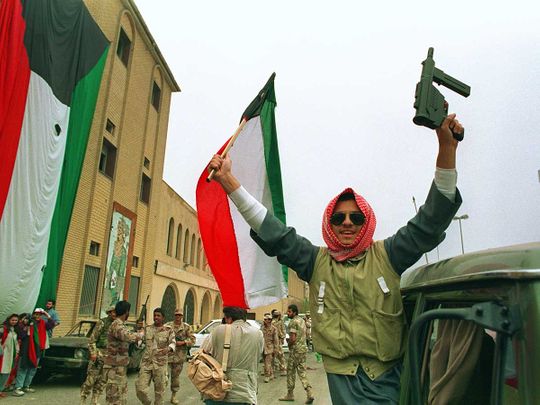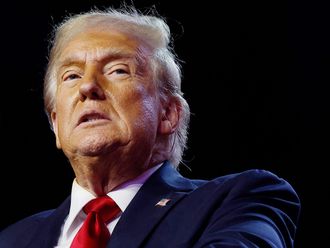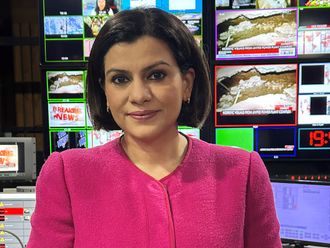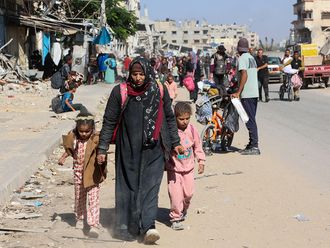
Today, August 2, marks the 30th year of the invasion of Kuwait by Saddam Hussain’s Iraqi forces. It was an act that took everyone in the region by surprise, especially with the swiftness of the incursion into Kuwaiti territory.
I remember that period well, for it was in that time when I lost my beloved cousin due to a grossly stupid and unforgivable act of one married into the family. My 19-year-old cousin Hani was enjoying a swim in the Red Sea when this individual possessed with macabre madness tried to playfully mow him down with a speed boat, resulting in the shearing of half my cousin’s body by the propeller blades.
And as we sat numbly and in shock for the funeral wake for the next three days, the uncertainties in Kuwait were also brewing in most people’s minds.
see also
- Eid Al Adha 2020: First time scenes from Haj show pilgrims with masks and social distancing at Mount Arafat
- In pictures: Gold rush in Saudi Arabia to beat VAT deadline
- In pictures: As COVID-19 lockdown eases, Saudi Arabia gets ready to welcome Haj pilgrims
- In Pictures: Scaled back Haj pilgrimage in Saudi Arabia
In an era where there were no CNN or BBC sites on television to turn to, the news for the first three or four days following the invasion was very curtailed for some odd reason. Local newspapers in Saudi Arabia did not cover the event and I distinctly remember addressing an editor in chief of a reputable local daily demanding to know why the kingdom’s annual production of dates commanded prominent newspaper space, while an event like an invasion did not make it to the front pages.
So starved were we in the first few days for news of the Iraqi advances, that it prompted me to go and purchase a high-powered digital radio that would beam me unfiltered news from various countries around the world. It would only be three or four days after the initial invasion that the local news began broadcasting the events.
Fears of an attack on Saudi Arabia
A hastily arranged Arab Summit was called by King Fahd Bin Abdul Aziz of Saudi Arabia, an event that was televised for the first time. People remained glued to their TV sets as Arab leaders started arriving from various capitals in their royal or presidential aircraft. Through those sad days with the image of my loving cousin fresh in my mind, I vividly remember when the Qatari premier’s aircraft touched down, someone inside must have accidentally deployed the escape slide which unfurled before millions of viewers before even the doors opened and the Emir stepped out.
Soon American statesmen began to arrive with satellite pictures claiming that Saddam was to attack Saudi Arabia next. The general public didn’t have much solid information to go on, and rumours were rife about Saddam’s true intentions. Some said he was on the march to capture the rich oilfields in the country’s eastern province. Others were genuinely fearful that an invasion of Saudi Arabia would prompt tribes to take up arms and that could lead to anarchy. For the sake of my family, I procured a handgun for their protection.
As the days following August the second turned into weeks and then months, an unprecedented build-up of troops from a hastily formed coalition of international forces began arriving in the country. The Americans made the bulk of the forces and along with their aircraft and carriers positioned off the coast of Saudi Arabia, they posed a formidable challenge to Saddam’s invaders.
Osama Bin Laden, at that time relatively unknown for his exploits against the Russians in Afghanistan had earlier made a plea to King Fahd to allow his followers to stand up to the challenge, a plea that was dismissed and which proved to have reverberations in later years.
Internal conflict
As Americans and foreign troops began filling in, an internal conflict began between the religious establishment who were opposed to the presence of the troops and their unrestrained behaviour.
Male and female soldiers freely wandered around the towns in the country and no amount of coercion was going to have the females secluded or covered up. This really rankled the members of the country’s religious bodies who had for so long worked on keeping Saudi traditions tied to their whims.
The presence of hundreds of thousands of foreign troops also encouraged women to seek more rights and they made a public spectacle of driving down the streets of the capital before severe condemnation from the clerics forced the government to rein them in.
The US President George H. Bush arrived in November along with his wife Barbara for a meeting with King Fahd and then spent time with the US troops on the front for Thanksgiving. We came to know of personalities like James Baker, the dignified US secretary of state, Colin Powell the US Chairman of the Joint Chiefs of Staff, and the robust General Norman Schwarzkopf, who would in January of 1991 command the swift and devastating 1991 military assault on Iraq.
While my cousin Hani died a swift and undeserved death that eventful August, it took more than another decade and a half before Saddam Hussain met his fate, leaving behind a forever changed Middle East.
— Tariq A. Al Maeena is a Saudi socio-political commentator. He lives in Jeddah, Saudi Arabia. Twitter: @talmaeena.








